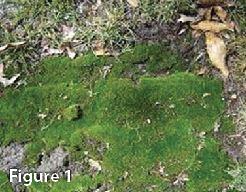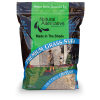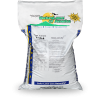Tips to prevent the buildup of lawn algae and moss capable of damaging lawn grass.
Mosses and algae can often appear in areas of a lawn where growing conditions hamper grass growth. Things like excessive shade, acid soil, poor drainage, compaction, poor air circulation, and low fertility levels may all contribute to moss and algae growth. Acid soil (low pH) is most often blamed for moss or algae invasion of the turf, but any factor that leads to poor grass growth can encourage the development of moss or algae in the lawn. Shady low areas which are heavily compacted and often wet for prolonged periods are conducive for algae growth.
Why do moss and algae grow on lawns?
Moss and algae are common lawn invaders, but why do they grow in the first place? Algae and moss occur in lawns where conditions are not suitable for growing dense, healthy turf. Moss and algae thrive in damp, shady environments that may not be ideal for grass. The lack of sunlight and excessive moisture offers the perfect conditions for them to spread quickly and take over your lawn. If you have moss or algae growing in your yard, you may need to address the underlying environmental issues that are causing them to thrive in the first place.
What is lawn moss?
Mosses are small leafy plants, which appear to be a mass of fine stems (Fig. 1) There are a great number of mosses that are adaptable to a variety of environmental conditions ranging from dry areas to bog-like habitats.
What is lawn algae?
Algae are a group of small, primitive green plants that are often mistaken for moss in moist areas under trees. Algae are not parasitic on grass, but they can produce a greenish to brownish scum on the soil surface (Fig. 2). After the algae have dried, a dark green or black green crust will form on the soil surface. This crust reduces water penetration and air movement into the soil. It must be removed before turf grass can be established.
The Impact of Moss and Algae On Your Lawn
Moss and algae on a lawn can be likened to unexpected guests who overstay their welcome. Their presence usually signals that something's amiss with the health of the lawn or the soil beneath. Think of them as a smothering layer; they compete with the grass for vital resources like sunlight, water, and nutrients. If they spread too much, the grass struggles to thrive. Essentially, moss and algae are subtle red flags suggesting our lawn needs attention.
How To Get Rid of Lawn Algae and Moss
Maintain good soil fertility.
Always have a soil test done to determine if corrective lime and/or fertilizer applications are necessary to correct soil fertility levels and adjust to the proper pH.
Natural Alternative's All-Season Lawn Fertilizer is fortified with Protilizer® Seed & Plant Activator, our exclusive plant supplement with beneficial microbes for efficient turf absorption of nutrients and water. This nutrient-packed blend revitalizes depleted soils and enhances soil structure.
How to Use: Spread a 1-inch layer of Organic Lawn Booster over your lawn, then water it in. It will not only provide essential nutrients but also improve soil aeration and drainage.
Improve drainage.
Check your lawn for pockets of standing water. Soils that are constantly wet because of poor drainage should be graded so that water will move off the lawn.
Provide more light.
Sometimes it may be necessary to choose between having trees or a good lawn. Lawns in completely shaded areas will not thrive and the removal of some trees may be the only answer. Oftentimes removing low branches and thinning out branches in the trees allows for enough light so decent good turf can be produced.
Relieve compacted soils.
Compacted soil may be loosened by aeration and topdressing the lawn with organic matter. The use of an aeration machine that removes soil plugs will help relieve compaction in the lawn.
Improve air circulation.
Removing low-hanging tree branches will help increase air circulation and allow sunlight into the area. Increasing air circulation will decrease humidity and help your lawn to dry after rain.
To achieve long-term control of moss and algae, it’s important to correct the conditions unfavorable for grass growth. For questions or more information, sign up for our e-newsletter, The Monthly Dirt, follow our social channels or give us a call for the latest seasonal tips and DIY know-how.





